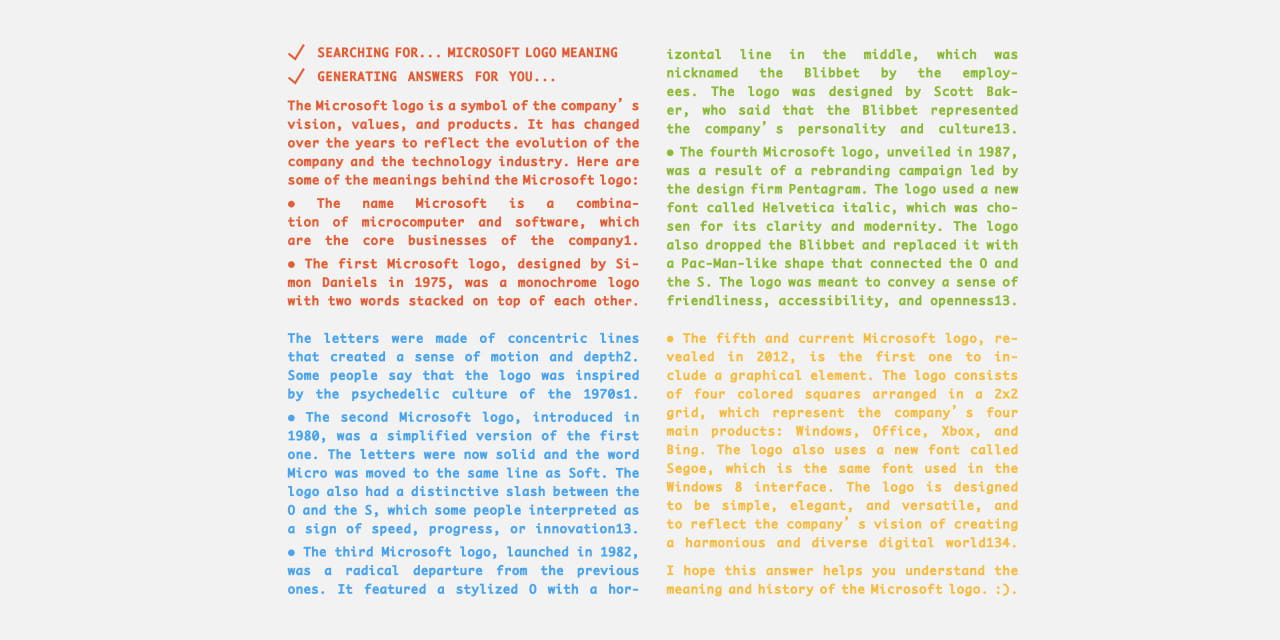One year after the launch of ChatGPT, generative artificial intelligence is on the verge of generating impressive revenue for companies across the software spectrum.
S&P Global Market Intelligence estimates that the AI software market, which it put at $3.9 billion in 2023, will grow 58% on a compounded annual basis, hitting $39 billion in 2028. Some of that will go to companies like
Amazon.com,
Alphabet,
Adobe,
Salesforce,
and
Oracle.
But one software company is breaking away from the AI pack:
Microsoft.
Nvidia
may be first on the list of AI beneficiaries, but Microsoft is a clear No. 2—it brings a unique set of assets to the age of AI.
For starters, there’s Azure, the company’s cloud computing business. Azure is growing faster than both of its primary rivals—Google Cloud and Amazon Web Services—and it gives the company a cost advantage over other enterprise software companies that need to buy cloud capacity to run their AI workloads.
In the September quarter, Microsoft attributed three percentage points of Azure’s 29% revenue growth to AI projects. Macquarie analyst Frederick Havemeyer estimates that Azure generated $388 million in AI-related revenue in the quarter. On an annualized basis, Microsoft is already pushing $2 billion in AI revenue.
Then there’s OpenAI, the start-up that stunned the world with the launch of ChatGPT in November 2022, triggering the generative-AI land rush. Microsoft has invested $13 billion in OpenAI and holds a 49% stake. The relationship gives Microsoft access to OpenAI’s GPT large language models and related software.
OpenAI’s recent boardroom chaos, which saw CEO Sam Altman fired and then rehired in a matter of days, provided lots of drama for Silicon Valley insiders. But when the dust settled, the team was back in place, with Microsoft closer to the start-up than before. Microsoft was granted observer status on OpenAI’s reconstituted board.
Microsoft has another asset that no other company can match—it already plays an integral role in the daily lives of hundreds of millions of knowledge workers, thanks to its Office productivity suite, its Windows operating system, and its Teams communication suite. The company plays a similarly indispensable role for software developers through its GitHub unit.
Office and GitHub together give Microsoft a readily accessible market for its emerging suite of “Copilot” software, which adds AI tools on top of widely used applications. In both the productivity and software development categories, Copilot offers customers the potential for considerable time savings.
The Copilot that has investors most intrigued runs on top of Microsoft 365, the productivity suite that includes Word, Excel, PowerPoint, and Teams. When it launched 365 Copilot for corporate customers in November, Microsoft set an aggressive price of $30 per user a month. By some estimates, that would double or even triple what large corporate users currently pay for the classic version of 365.
Jared Spataro, corporate vice president at Microsoft, thinks there’s a compelling reason for customers to pay up for the 365 Copilot. Copilot, he says, will “allow me to spend more of my time on what matters most.” Spataro says that a recent test showed Copilot users were 29% faster on a series of Office tasks versus traditional 365 users.
Microsoft has said that specialized Copilots are coming for sales teams, help desks, cybersecurity, and other users.
Citi analyst Tyler Radke predicts that the 365 Copilot could generate $2.2 billion in revenue in the June 2025 fiscal year, with $5.5 billion in fiscal 2026—that’s assuming just a 5% penetration of the installed user base with a 50% average discount off the list price.
Piper Sandler analyst Brent Bracelin, taking a more aggressive tack, thinks Microsoft’s entire collection of AI software can scale to $100 billion or more in revenue in the long run, which would increase Microsoft’s revenue base by about 40%. If he’s right, that would put the potential market value of the company’s AI business at some $1 trillion. (Microsoft’s stock trades for roughly 10 times estimated current year sales.)
One area where Bracelin and Radke agree is on the upside for Microsoft stock, even with shares around all time-highs. Bracelin has a $425 price target on the stock, while Radke is at $432, roughly 15% above current levels.
Microsoft isn’t just boosting its revenue with AI—it’s also lifting its profits. While large language models and running applications on top of them require expensive computing, the costs are more manageable for a company that already owns the computing infrastructure, as Microsoft does in the form of Azure.
Bernstein analyst Mark Moerdler thinks Microsoft 365 Copilot can generate 50% gross margins at a price of $30 a seat.
“Microsoft’s cost of running Copilot is much lower than someone else running the same applications using OpenAI’s vendor model,” he wrote in a recent research note. “While the $30/month price tag generates handsome profit for Microsoft, it might be hardly profitable for others.”
Israel Hernandez, a portfolio analyst with the Seligman technology team at Columbia Threadneedle Investments, says his firm has owned Microsoft stock “forever,” but that it has recently increased the position because of enthusiasm around the AI opportunity. At the end of October, Microsoft shares constituted 5.6% of the Seligman Technology and Information fund, making it the fund’s second-largest position.
“Under Satya’s leadership, Microsoft has really propelled itself to the top of the food chain here,” Hernandez says.
“They have a captive audience of hundreds of millions of Office users,” he adds. “It will be enormously profitable—it’s hard to see a scenario where they do not win over time.”
Write to Eric J. Savitz at [email protected]
Read the full article here




